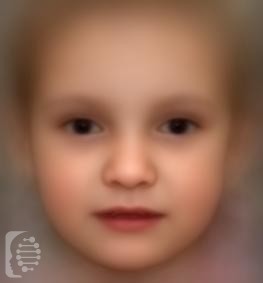What is Alagille syndrome?
Alagille syndrome is a genetic condition which affects mainly the liver. Individuals with the syndrome have less than the normal number of bile ducts in their liver.
This rare disease also affects the heart, and other parts of the body too. Symptoms are usually first noticed in infancy.
The syndrome occurs in approximately 1 in every 30,000 live births.
This syndrome is also known as:
AGS AHD Alagille Syndrome; Algs Alagille-watson Syndrome; Aws Arteriohepatic Dysplasia; Ahd Cholestasis With Peripheral Pulmonary Stenosis Hepatic Ductular Hypoplasia, Syndromatic
What gene change causes Alagille syndrome?
88% of cases of the syndrome are caused by mutations to the JAG1 gene, with just 1% caused by mutations to the NOTCH2 gene.
The condition is inherited in an autosomal dominant pattern. In the case of autosomal dominant inheritance just one parent is the carrier of the gene mutation, and they have a 50% chance of passing it onto each of their children. Syndromes inherited in an autosomal dominant inheritance are caused by just one copy of the gene mutation.
What are the main symptoms of Alagille syndrome?
The majority of the most severe symptoms are the result of a lack of bile ducts in the liver causing liver damage and related problems. They might first be noticed by the presence of yellow-tinged skin in an affected individual.
In infancy, the most common symptoms are jaundice, loose and pale stools as well as poor growth and a failure to thrive. These symptoms generally stabilize between the ages of 4 and 10 years old.
From childhood, symptoms include continued, recurrent jaundice, itching, fatty deposits in the skin, and delayed growth and development.
Unique facial features of the syndrome include a prominent and broad forehead, deep set eyes, a straight nose, and a small pointed chin. Individuals with the condition also usually have an extra circular line on the surface of their eye.
Other less serious symptoms include a possible heart murmur, although this is rarely indicative of something serious, and spinal bones in the shape of a butterfly rarely present any medical problems.
Possible clinical traits/features:
Depressed nasal bridge, Broad forehead, Hypercholesterolemia, Hypoplasia of the ulna, Hemivertebrae, Hepatocellular carcinoma, Hypertelorism, Short distal phalanx of finger, Hypertriglyceridemia, Stroke, Chorioretinal atrophy, Cirrhosis, Axenfeld anomaly, Atrial septal defect, Band keratopathy, Butterfly vertebral arch, Cataract, Abnormality of the ribs, Areflexia, Renal hypoplasia, Papillary thyroid carcinoma, Pigmentary retinal deposits, Autosomal dominant inheritance, Renal dysplasia, Vesicoureteral reflux, Ventricular septal defect, Tetralogy of Fallot, Triangular face, Strabismus, Renal tubular acidosis, Peripheral pulmonary artery stenosis, Reduced number of intrahepatic bile ducts, Incomplete penetrance, Infantile onset, Upslanted palpebral fissure, Specific learning disability, Macrotia, Multiple small medullary renal cysts, Long nose, Intellectual disability, mild, Prolonged neonatal jaundice, Myopia, Coarctation of aorta, Microcornea, Posterior embryotoxon, Elevated hepatic transaminase.
How is it diagnosed?
To find out if someone has a diagnosis of Alagille, it is important to have a consultation and evaluation with a clinical genetic specialist. Specialists may also suggest specific genetic testing or other types of tests to help reach a diagnosis. FDNA’s AI technology can help speed up the diagnostic process by analyzing facial features and other health information.

